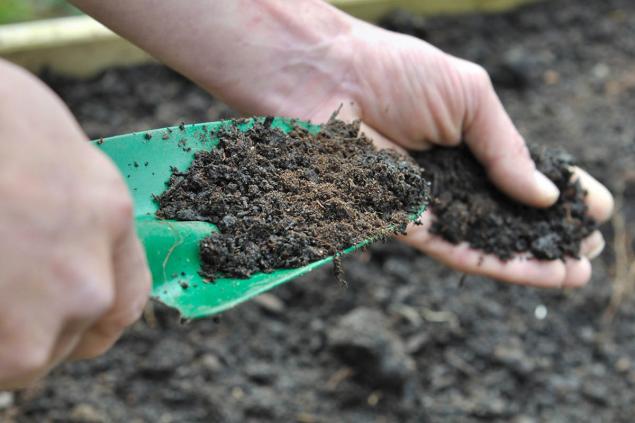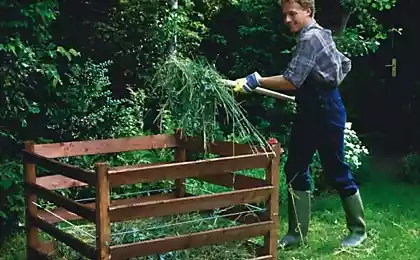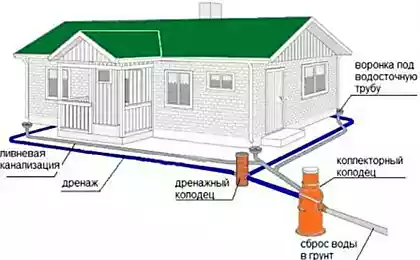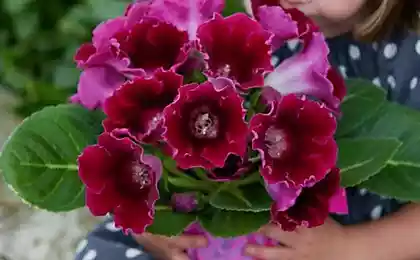198
A young beauty will tell you what houseplants can be transplanted in the summer
The best time to transplant plants is considered spring. You can do this in the summer, if you know. How to transplant plants correctly. Nuances are important: soil, pot, work with the flower itself, fertilizers. Today's edition. "Site" I'll tell you all about it.

In the summer, it is allowed to transplant any plants if they need it. For example, a summer transplant can be easily transferred. pine. But under no circumstances should you touch cacti and succulents. They tolerate transplantation easiest in early winter. If the plant is just beginning to bloom, it is also better not to disturb. The same rule applies to sick flowers: first of all they need to be cured.
Not everyone knows that there are several types of transplants: complete, incomplete, replacement of the upper layer of land and transshipment. A complete transplant involves replacing all the ground in the pot. This is a complex process, as you need to gently shake off and wash away the soil from the roots of the flower. Without experience, it is better not to take on such a case.

With incomplete transplantation, it is allowed that the ground remains on the roots of the plant. Together with her, a green friend will go to his new pot. Replacement of topsoil In principle, this is not a transplant at all. Replacing the old layer of soil, you add nutrients and vitamins to the ground. This update is usually done for large plants 1 time per season.
Transshipment means transplanting plants into a new more spacious pot. At the same time, the old land is not removed at all, it remains to fill the bottom and space on the sides of the pot with new soil. This option is considered the easiest and safest. Even a novice in green affairs can handle it.
Choosing a pot and soil for the plant There are no special wisdoms that you need to master to learn how to choose a pot. Focus on the size of the old pot: The new should be about 3-5 cm more.

Do not immediately plant a small plant in a huge pot. The useful qualities of the soil deteriorate much faster, since the distance from the roots to the bottom of the pot is too large. There are also plants that generally need to be cramped in the pot. This is the only way they can blossom in the future. For example, hippeastrum and epiphytic orchid It is enough to simply update the top layer of the soil.
Different plants need different soil. Therefore, do not buy land at random: consult a specialist in the store or choose a universal soil. It is usually sterilized and enriched with vitamins and nutrients in advance.

It is better not to transplant the plant immediately after buying the soil. Open the package and let the ground breathe for a few days. It is necessary to weather nitrogen from the soil. Land collected in the garden or forest It is necessary to sterilize at home. To do this, it is enough to warm it in the oven for 1 hour at 100 degrees.
How to transplant plants: First of all, prepare the surface on which you will work. The table can be covered with food film. Get dressed in work clothes, put on an apron and gloves if you want. Now we can begin the main stages.
After transplantation, experienced gardeners spend 2-3 times spraying. For this, Zircon or Epin are suitable. The interval between spraying is 5-7 days. Thanks to these drugs, you will save your green friend from bacteria and fungus.

Also, when you transplant a plant, try to water it less than usual. The roots will begin to be active in search of water and will grow faster. If you want to feed the flower, use organics. But not earlier than 4-6 weeks after transplantation. For example, a banana peel is perfect. How to make it fertilizer, we wrote in our article.
That's all the wisdom for today! We hope you can use them. Maybe we've missed something and you're going to add some useful stuff to that. We'll be waiting for you in the comments!

In the summer, it is allowed to transplant any plants if they need it. For example, a summer transplant can be easily transferred. pine. But under no circumstances should you touch cacti and succulents. They tolerate transplantation easiest in early winter. If the plant is just beginning to bloom, it is also better not to disturb. The same rule applies to sick flowers: first of all they need to be cured.
Not everyone knows that there are several types of transplants: complete, incomplete, replacement of the upper layer of land and transshipment. A complete transplant involves replacing all the ground in the pot. This is a complex process, as you need to gently shake off and wash away the soil from the roots of the flower. Without experience, it is better not to take on such a case.

With incomplete transplantation, it is allowed that the ground remains on the roots of the plant. Together with her, a green friend will go to his new pot. Replacement of topsoil In principle, this is not a transplant at all. Replacing the old layer of soil, you add nutrients and vitamins to the ground. This update is usually done for large plants 1 time per season.
Transshipment means transplanting plants into a new more spacious pot. At the same time, the old land is not removed at all, it remains to fill the bottom and space on the sides of the pot with new soil. This option is considered the easiest and safest. Even a novice in green affairs can handle it.
Choosing a pot and soil for the plant There are no special wisdoms that you need to master to learn how to choose a pot. Focus on the size of the old pot: The new should be about 3-5 cm more.

Do not immediately plant a small plant in a huge pot. The useful qualities of the soil deteriorate much faster, since the distance from the roots to the bottom of the pot is too large. There are also plants that generally need to be cramped in the pot. This is the only way they can blossom in the future. For example, hippeastrum and epiphytic orchid It is enough to simply update the top layer of the soil.
Different plants need different soil. Therefore, do not buy land at random: consult a specialist in the store or choose a universal soil. It is usually sterilized and enriched with vitamins and nutrients in advance.

It is better not to transplant the plant immediately after buying the soil. Open the package and let the ground breathe for a few days. It is necessary to weather nitrogen from the soil. Land collected in the garden or forest It is necessary to sterilize at home. To do this, it is enough to warm it in the oven for 1 hour at 100 degrees.
How to transplant plants: First of all, prepare the surface on which you will work. The table can be covered with food film. Get dressed in work clothes, put on an apron and gloves if you want. Now we can begin the main stages.
- The new pot should be thoroughly washed and ideally soaked for a few hours before transplantation. It is necessary that the walls of the pot absorbed as much moisture as possible. If you plan to use an old pot you already had, peel it and scald it with boiling water several times. Then rinse with plain water.
- At the bottom of the pot, it is best to place drainage. For this purpose, shards of clay, sea pebbles (wash in advance and boil it), a crumb of brick or balls of ceramsite are suitable. Usually. drainage.

- Place it on the drain. sterileAnd then in the center of the pot is the plant itself. Its base should be lowered 2-3 cm lower than the upper edge of the pot. Orient by the size of the roots of the flower.
- Consider the transplant method. The roots will need to remove all soil or partially free the roots from the ground. If you notice rot, carefully remove the damaged part of the plant.
- Finally fill the space around the plant with slightly moist earth. At least a little. Consolidate the soil and tap the pot walls. This is to ensure that there are no voids inside the pot.

- After a few days, the soil will finally settle down. It means you have to. water the plant abundantly and add a little loose ground.
After transplantation, experienced gardeners spend 2-3 times spraying. For this, Zircon or Epin are suitable. The interval between spraying is 5-7 days. Thanks to these drugs, you will save your green friend from bacteria and fungus.

Also, when you transplant a plant, try to water it less than usual. The roots will begin to be active in search of water and will grow faster. If you want to feed the flower, use organics. But not earlier than 4-6 weeks after transplantation. For example, a banana peel is perfect. How to make it fertilizer, we wrote in our article.
That's all the wisdom for today! We hope you can use them. Maybe we've missed something and you're going to add some useful stuff to that. We'll be waiting for you in the comments!
Signs of Successful Old Age and Why I'm Happier Than I Was at 20
She rushed wild boar for strawberries, dried pastile, there will be a royal treat for grandchildren.

























